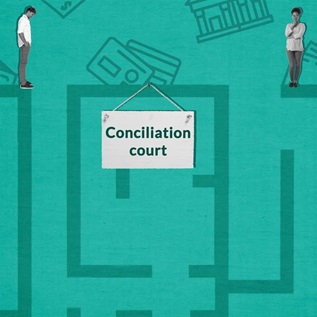A Short History of Payday Lending Law
A hundred years ago, when a mass market for consumer credit did not yet exist, underground purveyors of consumer credit began to emerge, and a variety of problems ensued. “Salary lenders” offered one-week loans at annual percentage rates (APRs) of 120 percent to 500 percent, which are similar to those charged by payday lenders today.[i] To induce repayment, these illegal lenders used wage garnishment, public embarrassment or “bawling out,” extortion and, especially, the threat of job loss.[ii]
State policy makers undertook an effort to suppress salary lending while also seeking to facilitate the expansion of consumer credit from licensed lenders. One key change was a targeted exception to the traditional usury interest rate cap for small loans (all original colonies and states capped interest rates in the range of 6 percent per year).[iii] The 1916 publication of the first Uniform Small Loan Law permitted up to 3.5 percent monthly interest on loans of $300 or less. Two-thirds of states adopted some version of this law, authorizing annualized interest rates from 18 to 42 percent, depending on the state.[iv] Subsequently, a market for installment lenders and personal finance companies developed to serve consumer demand for small-dollar credit.
By the middle of the 20th century, a mass-market consumer financial industry was emerging. Consumers were gaining access to a wide range of credit products, including mortgages to purchase homes and credit cards to purchase goods and smooth household consumption. State laws started to become inadequate to regulate national lenders. A series of federal banking-law developments in the 1970s and 1980s eased regulations on federally insured depositories, mortgage lenders, credit card lenders, and other financial companies, giving them broad rights to disregard state usury interest laws.[v] As this deregulation proceeded, some state legislatures sought to act in kind for state-based lenders by authorizing deferred presentment transactions (loans made against a post-dated check) and triple-digit APRs.[vi] These developments set the stage for state-licensed payday lending stores to flourish. From the early 1990s through the first part of the 21st century, the payday lending industry grew exponentially.[vii]
Today, the landscape for small-dollar credit is changing and several federally chartered banks, most of which have not previously offered these loans, have expanded their roles by offering “deposit advance” loans. These bank products share many characteristics of conventional payday loans, including triple-digit APRs and lump-sum repayment due on the borrower’s next payday. Further, a growing number of companies are providing loans online. These lenders pose challenges for state regulators, as national banks are typically exempt from state lending laws and online providers, who tend to incorporate offshore, on tribal land, or in states without usury caps, often evade state authority.[viii]
Though federal law remains mostly silent about payday lending, this situation is changing. The Talent Amendment to the 2007 defense authorization bill sought to protect military families from payday lending. This federal law enacted a first-of-its-kind, 36 percent interest rate limit on payday loans provided to military service members and their immediate relatives. Moreover, the Dodd-Frank Wall Street Reform and Consumer Protect Act of 2010 created the Consumer Financial Protection Bureau (CFPB) and provided the new agency with the authority to regulate payday loans generally.[ix]
[i] Arthur H. Ham, “Remedial Loans: A Constructive Program,” The Proceedings of The Academy of Political Science, Volume II. No. 2 (1912): 3. Elizabeth Renuart and Kathleen E. Keest, The Cost of Credit, Fourth Edition (Boston: National Consumer Law Center, 2009), 18.
[ii] Robert Mayer, "Loan Sharks, Interest Rate Caps, and Deregulation," Washington and Lee Law Review 69/2 (2012): forthcoming.
[iii] Lendol Calder, Financing The American Dream (Princeton University Press, 2001), Ch. 3. For American colony and state historical usury rules, see: James M. Ackerman, Interest Rates and the Law: A History of Usury, 1981, Arizona St. L.J.61 (1981).
[iv] Elizabeth Renuart and Kathleen E. Keest, The Cost of Credit, Fourth Edition (Boston: National Consumer Law Center, 2009), 18
[v] Marquette Nat’l Bank v. First of Omaha Service Corp. et al., 439 U.S. 299 (1978) (holding that a national bank is permitted to charge interest in accordance with the laws of state where the bank is located even if that interest rate exceeds the rate permitted by the state where the borrower is located). 12 U.S.C. § 1831(d)(a) (providing Marquette parity for state banks.).
[vi] Elizabeth Renuart and Kathleen E. Keest, The Cost of Credit, Fourth Edition (Boston: National Consumer Law Center, 2009), 348-350
[vii] Gary Rivlin, Broke USA (New York: HarperCollins, 2001), Ch. 6
[viii] Consumer Federation of America, ‘CFA Survey of Online Payday Loan Websites,” 2011.
[ix] The Dodd-Frank Wall Street Reform and Consumer Protect Act of 2010 created the Consumer Financial Protection Bureau and provided the new agency with the authority to regulate payday loans (12 U.S.C. § 5514(a)(1)). In 2007, the Talent-Nelson Amendment to the John Warner National Defense Authorization Act of 2007 and subsequent regulations limited the permissible annual percentage rate and created structural requirements for certain small dollar loans issued to members of the armed services and their dependents (10 U.S.C. § 987, 32 C.F.R. § 232.3).






